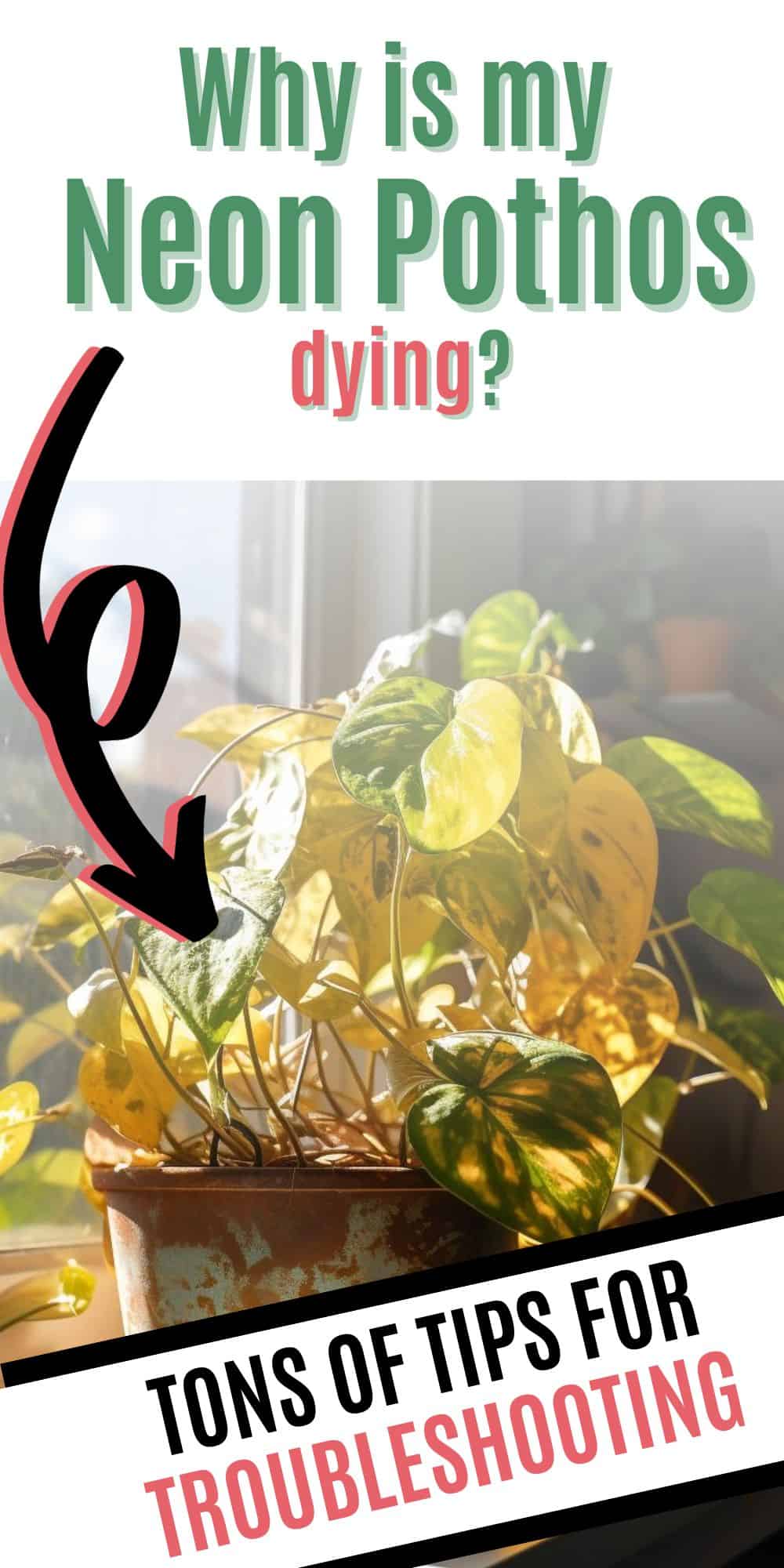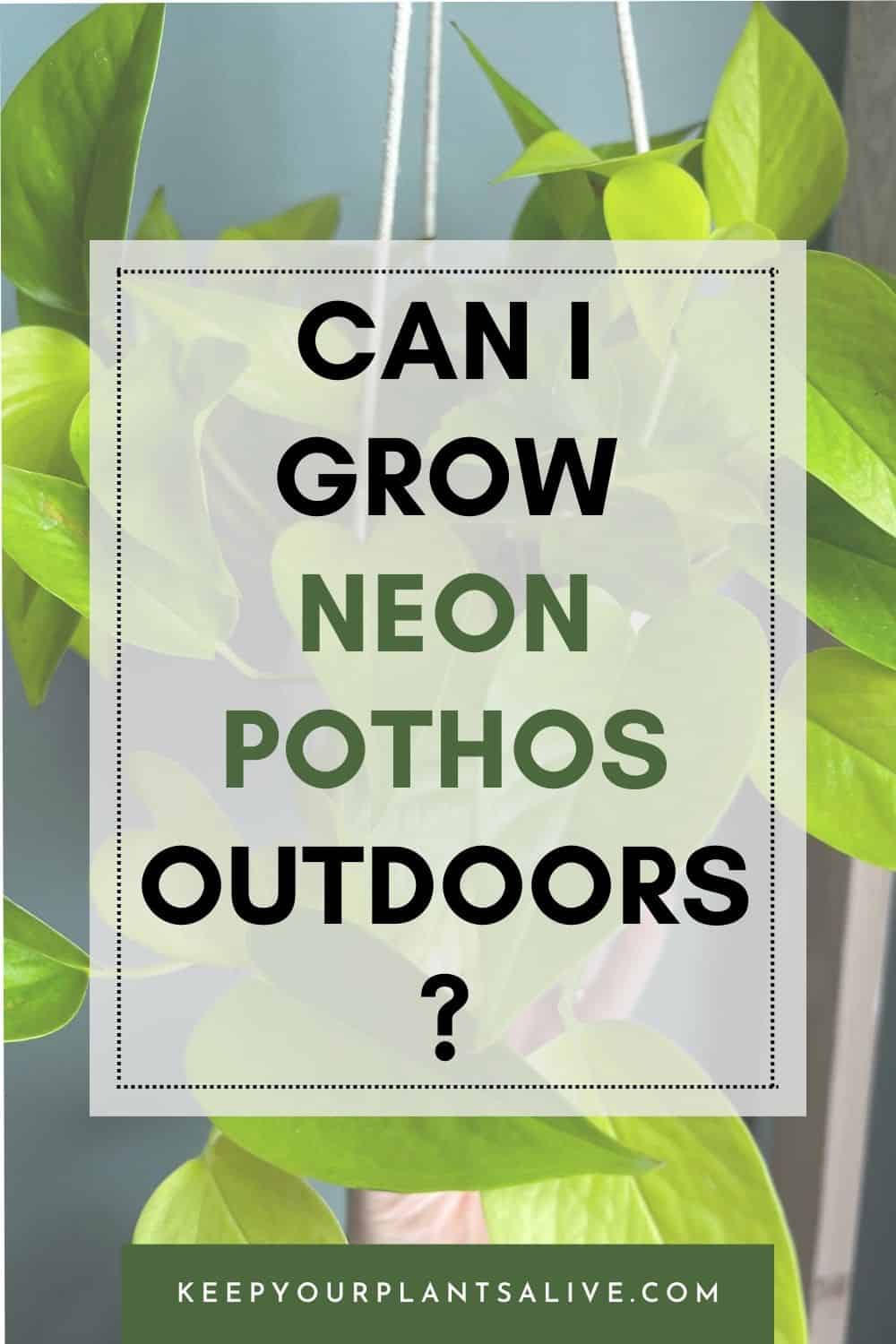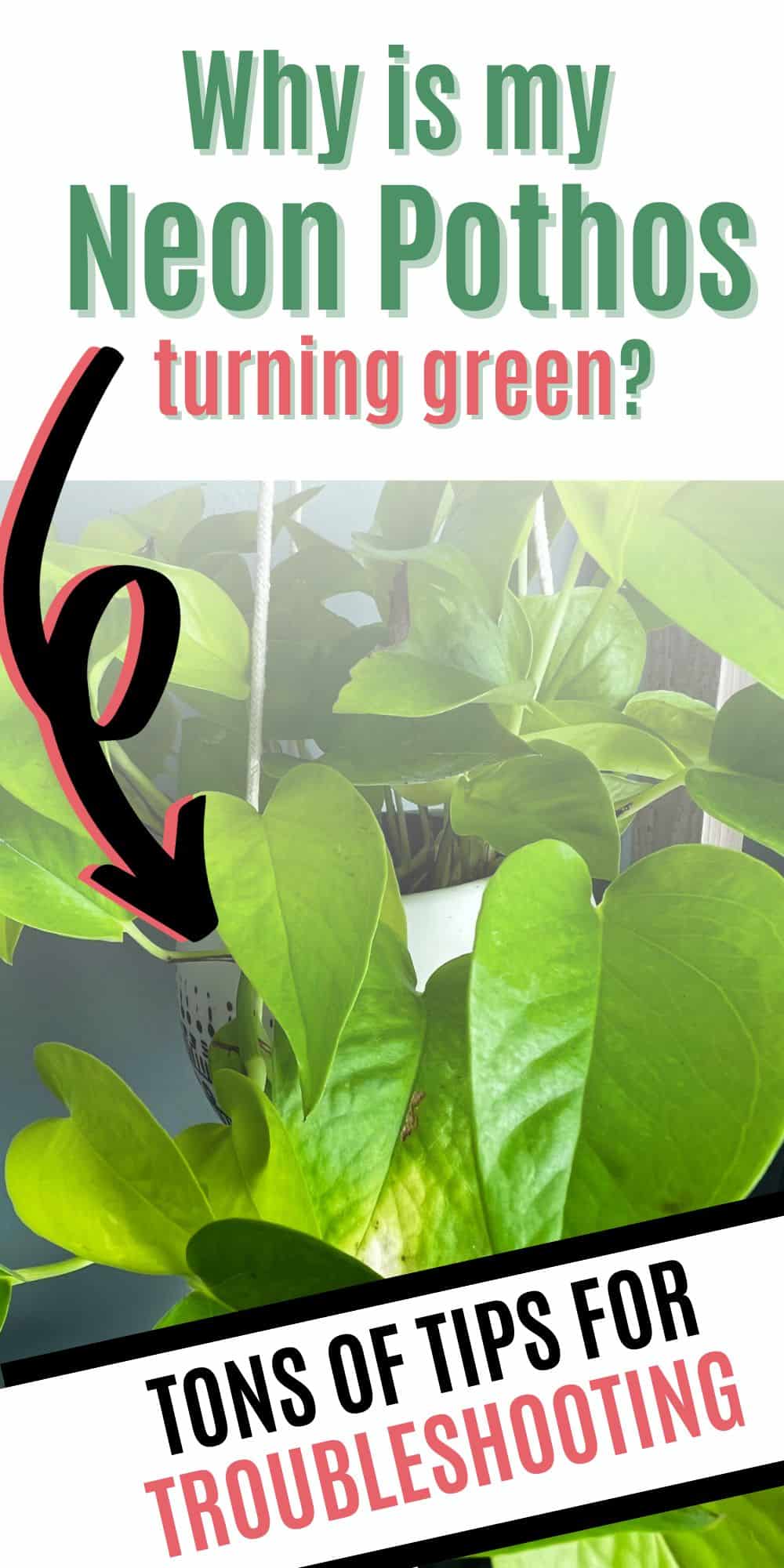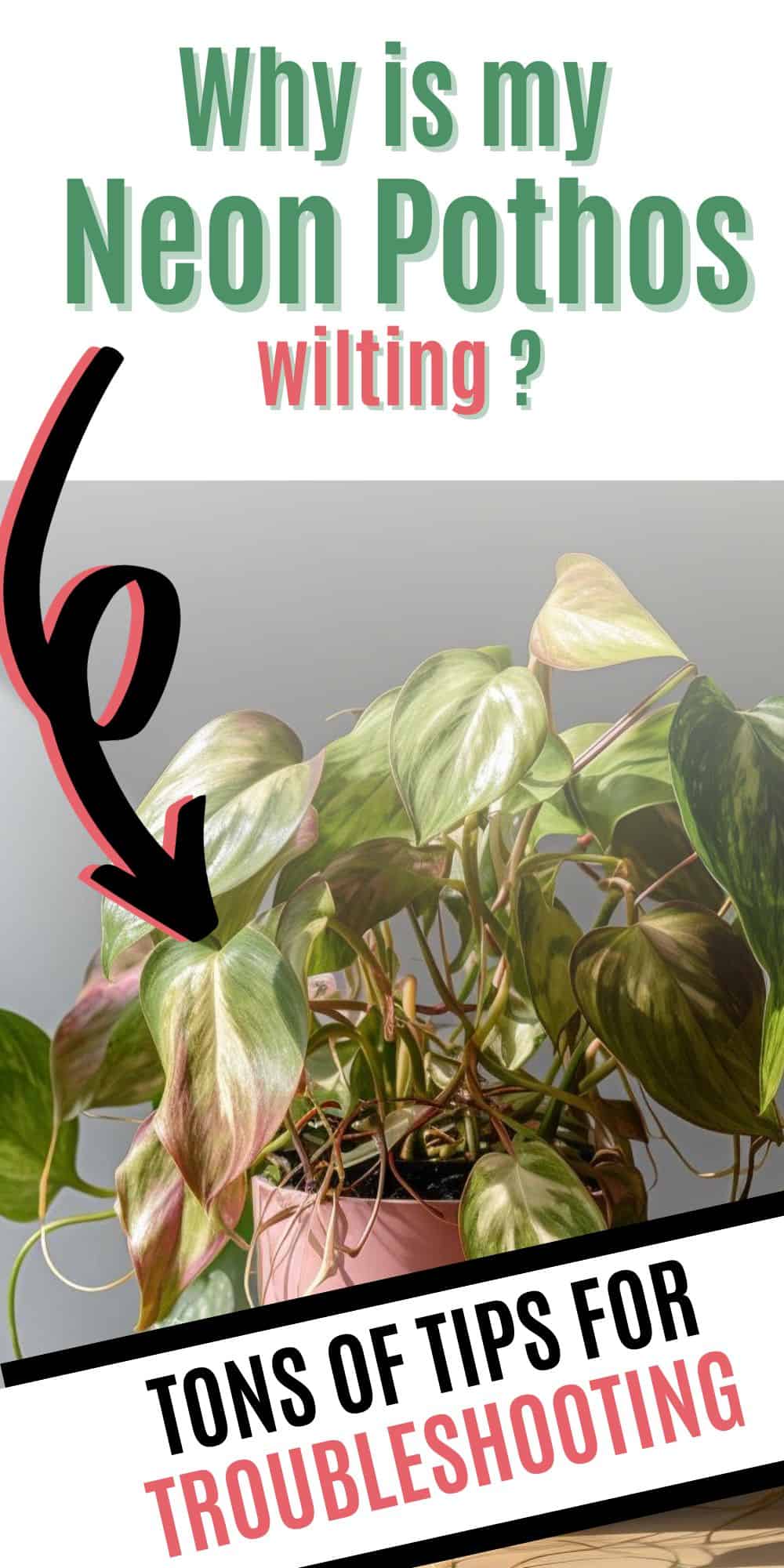How much light do Neon Pothos need for optimal growth? Learn the essential facts about Neon Pothos light requirements.
Plants are a reflection of our love. When we take care of a plant, we pay attention to its every change.
Some plants require more care, some less, but each deserves attention.
Neon Pothos is a rather low-maintenance plant, though showering it with love is more than recommended.
Like with most plants, you always need to be one step ahead, meaning that you need to learn their needs before you start caring for them.
In this blog, we’ll focus on Neon Pothos light requirements. More specifically, we’ll give the answer to a very common question – how much light do Neon Pothos need?
Before we shed light on Neon Pothos care (no pun intended!), let’s check out some of its main characteristics.
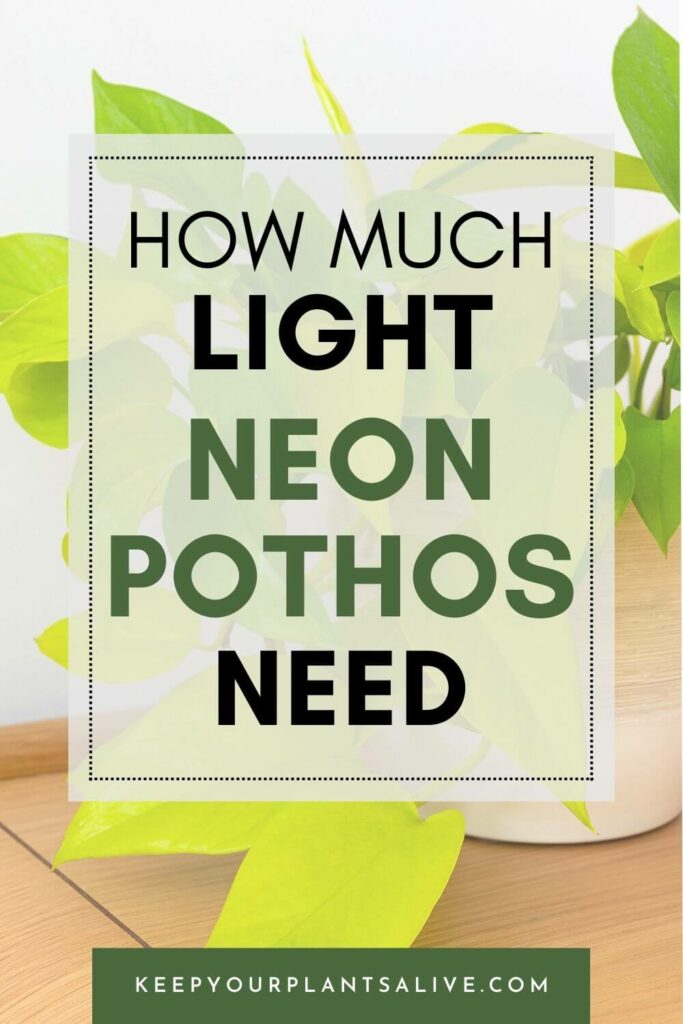
Neon Pothos Light Requirements
Although Neon Pothos light requirements are not demanding, exposure to direct sunlight is not recommended.
In other words, if it faces sunlight directly, it will cause the foliage to wilt and die.
Neon pothos lighting can also be low, but if you want faster and healthier plant growth, the ideal positioning is in the shade with strong indirect light.
Where to put Neon Pothos?
Ideally, an east or west-facing window would be an excellent location.
Neon Pothos appreciates humidity but can tolerate drier air if its soil remains consistently moist.
It finds a happy home in places like kitchens, bathrooms, and laundries.
Another thing to keep in mind about Neon Pothos light requirements is that newer leaves tend to be a little lighter in color compared to older ones, which darken with age.
These plants naturally grow in fertile soil in the forest and, therefore, are characterized by light adaptability.
This adaptability to different light conditions makes Neon Pothos an excellent choice for those seeking a low-maintenance plant with striking foliage.
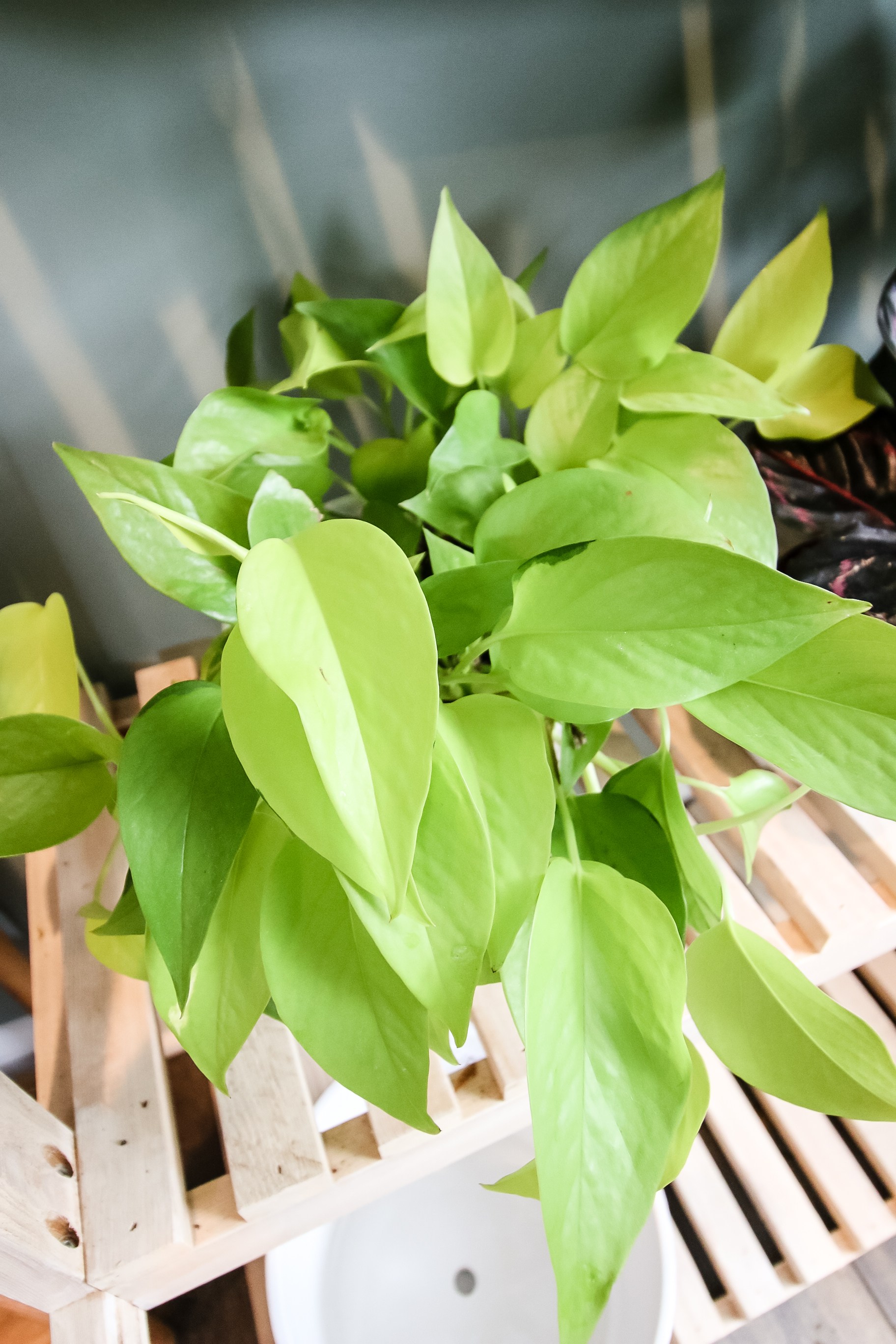
Can Neon Pothos grow in low light?
Absolutely! However, when adjusting Neon Pothos lighting, keep in mind that the neon color comes from the brightness.
More specifically, if you place them in a room that doesn’t get enough indirect sunlight, you might notice the vibrancy of the plant slowly fade away.
If that happens, simply move the plant to a sunnier spot, but be careful for it not to be placed under direct sunlight.
When the neon color comes back, move it back to its original position.
Can I keep Neon Pothos outdoors?
Neon Pothos can thrive outdoors, but this depends on where you live.
Above 50°F (10°C) is best for this plant - any degree below can only harm it.
If you have a well-insulated greenhouse in the yard, you are free to place the Neon Pothos there.
However, even in an isolated garden, temperatures should remain above the suggested temperature.
Additionally, always ensure that the Neon Pothos light requirements are met.
Another way to grow Neon Pothos outdoors is to plant it in your backyard garden during the spring.
Keep in mind that it does not thrive in winter temperatures, so you should replant your yard every spring.
Tips: If you want to grow it both outside and inside, it is best to plant it in a pot. So, from spring to autumn, you can grow it in the yard and in the winter periods in your home.
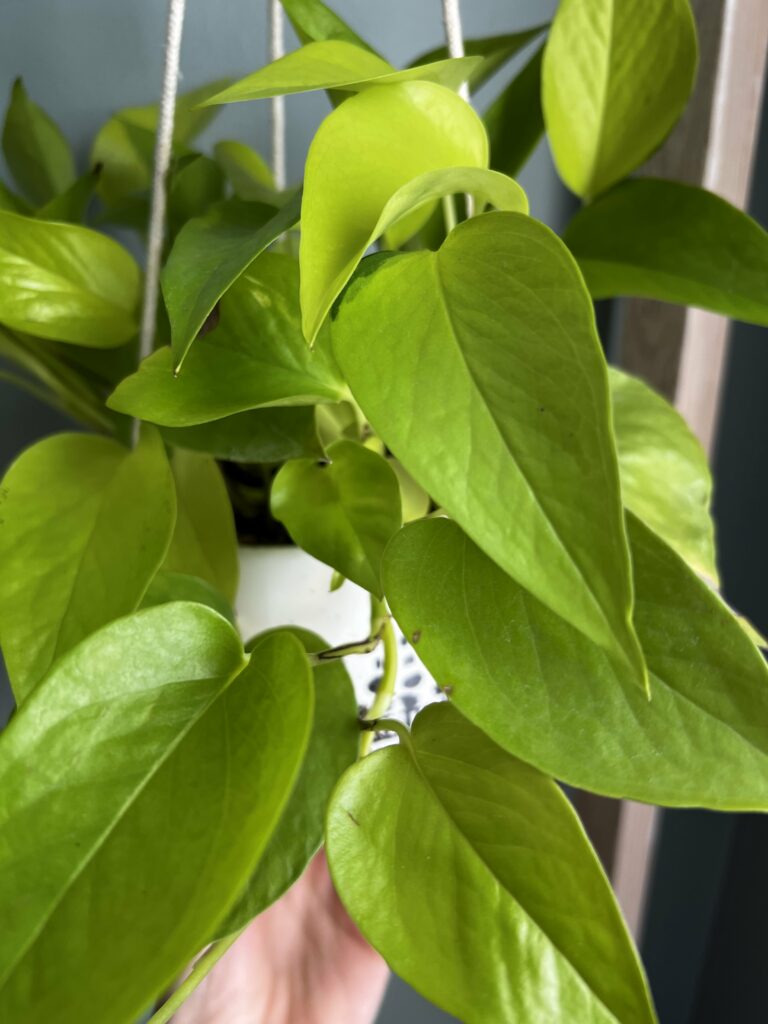
Troubleshooting Neon Pothos
Most issues that Neon Pothos may encounter are related to overly wet soil or poor air circulation.
Moreover, it is susceptible to root rot, bacterial leaf spots, and fungal growth.
Here are some signs to watch out for:
- Yellow leaves: Indicative of excessive watering or an inappropriate pot size.
- Legginess: Suggests that Neon Pothos lighting conditions are not ideal.
- Small and pale leaves: Indicates the plant is placed in bright light.
- Drooping leaves: A sign that it needs watering; the leaves will droop immediately
To prevent all these diseases, pay attention to watering and ensure adequate air circulation.
Other requirements for Neon Pothos
Neon pothos water requirements
Just like Neon Pothos lighting, the plant doesn’t require too much water.
Typically, you'll only need to water it once or twice a week, or whenever the top two inches of the soil have completely dried out.
Nonetheless, make sure it is placed in a proper pot with drainage holes.
If left drowning, the Neon Pothos can get root-bound, resulting in premature death.
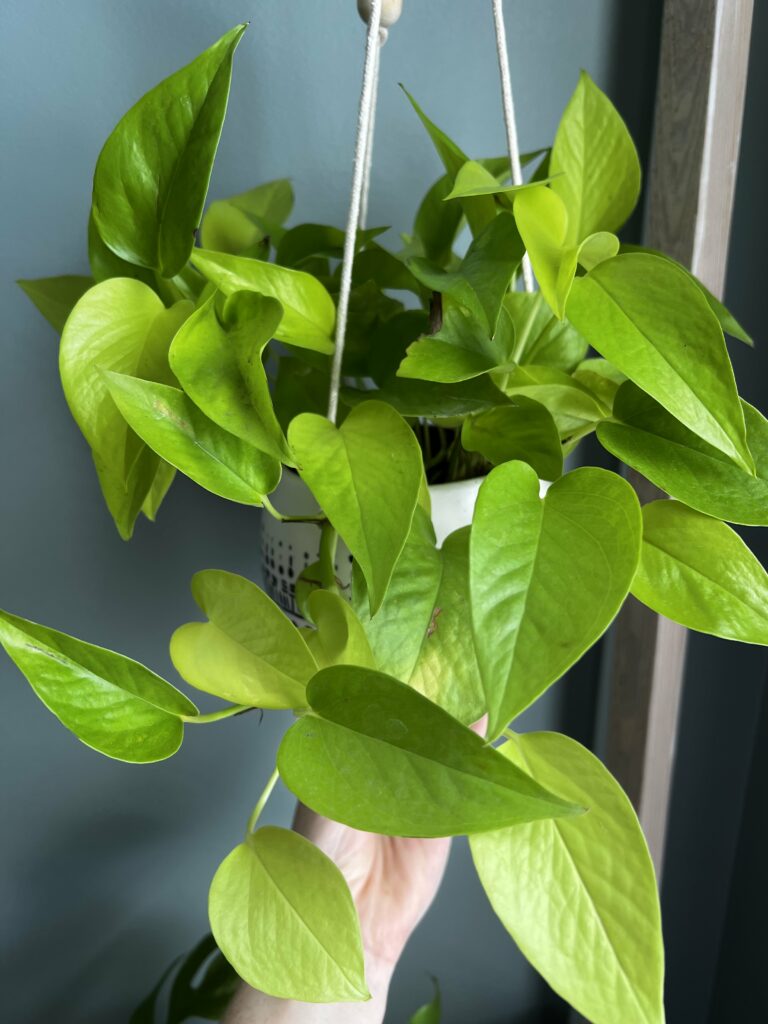
Pot Requirements
Now that we have Neon Pothos light requirements out of the way, it’s time to focus on pots.
Surely, after this information about the plant's natural growth, you say to yourself that you need a large one.
But when you plant a new, small plant in an unsuitable (big) pot, you might be causing it harm. Why is that?
A larger pot requires more soil, and when you water the soil, excess moisture can harm a small plant, potentially leading to root rot.
Choosing a small pot initially is advisable. Then, as the plant grows, you can freely repot it into a medium-sized pot without any problem.
What are Neon Pothos?
Neon pothos, also known as the Devil’s Ivy, is commonly associated with attributes like perseverance, strength, determination, and positivity.
Additionally, it is considered a symbol of luck, believed to bring wealth and happiness.
Because Neon Pothos light requirements, along with others, are rather straightforward, taking care of them will be a breeze!
Still, that doesn’t mean you should leave it alone for an extensive time.
Occasional giving it some love and fulfilling its needs are still crucial.
Are Neon Pothos rare?
Neon Pothos comes in two variations: one with variegated leaves and the other with pure green leaves.
While the former can be less common, the latter is readily available in most garden shops.
Neon Pothos is a unique plant that brings energy and a touch of luxury to your home.
By following the tips outlined here, you can cultivate a thriving Neon Pothos with ease.
As always, remember to pay special attention to the Neon Pothos light requirements.
Before you go…
If you are interested in more information about this beautiful plant, check out our full Neon Pothos care guide!
Thanks for reading!


Hey there, I'm Morgan, a houseplant enthusiast from sunny Charleston, South Carolina. Growing up surrounded by my mom's lush orchids and African violets, I discovered the magic of bringing nature indoors. Thanks to the pandemic, I delved deeper into houseplants, discovering their power to uplift moods and transform spaces. I'm here to spill all my secrets, helping you pick the perfect houseplant - and make it happy. Let's keep your plants alive, together! 😊

